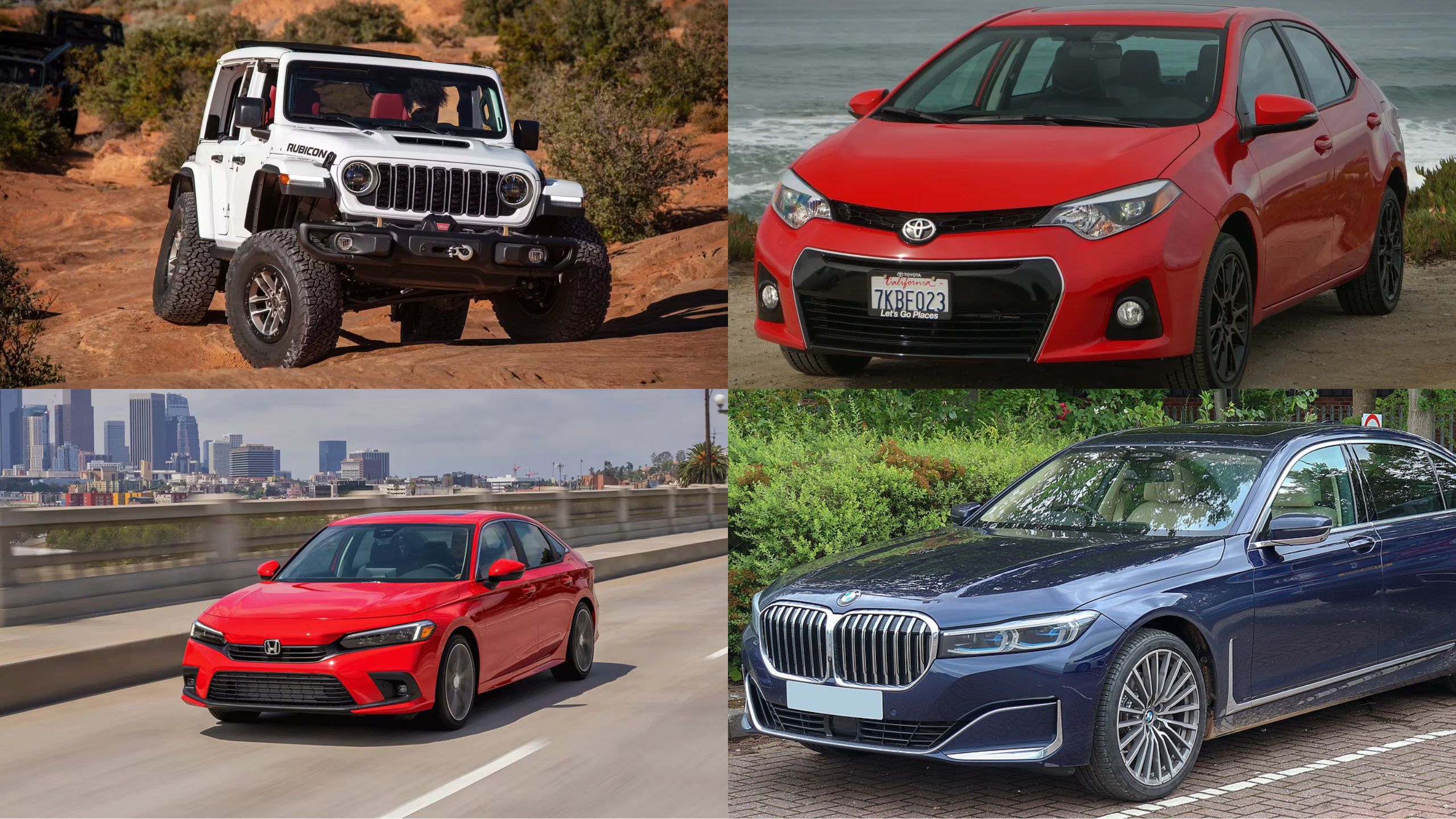The divide between DIY-friendly vehicles and those requiring specialist attention has never been more pronounced. As automotive technology advances, some manufacturers prioritize accessibility for home mechanics while others embrace complex systems that demand professional expertise.
For budget-conscious owners, the ability to perform routine maintenance can save thousands over a vehicle’s lifetime. Beyond the financial benefits, many enthusiasts find satisfaction in understanding and maintaining their vehicles.
This guide examines five cars designed with the home mechanic in mind and five that are best left to professional technicians.
We’ll explore specific design elements that make certain models accessible to DIY enthusiasts, from easily accessible components to straightforward diagnostic systems and contrast them with vehicles where specialized tools, proprietary software, and intricate packaging create significant barriers for amateur mechanics.
DIY-Friendly Cars
Whether you’re shopping for a new vehicle with maintainability in mind or simply curious about where your current car falls on the spectrum, this breakdown will help go through the increasingly complex world of automotive maintenance.
1. Toyota Corolla
The Toyota Corolla stands as perhaps the ultimate DIY-friendly vehicle, earning its reputation through thoughtful engineering that prioritizes accessibility and simplicity.
Under the hood, the Corolla’s engine bay features generous spacing between components, allowing even those with larger hands to access fasteners and parts without frustration.
This spaciousness extends to critical maintenance areas, oil filters positioned for easy removal, clearly marked fluid reservoirs, and accessible spark plugs that don’t require special tools or contortionist skills to replace.
Toyota’s commitment to mechanical consistency means that even across different model years, the fundamental maintenance procedures remain remarkably similar. This has fostered an extensive knowledge base among owners and independent mechanics alike.
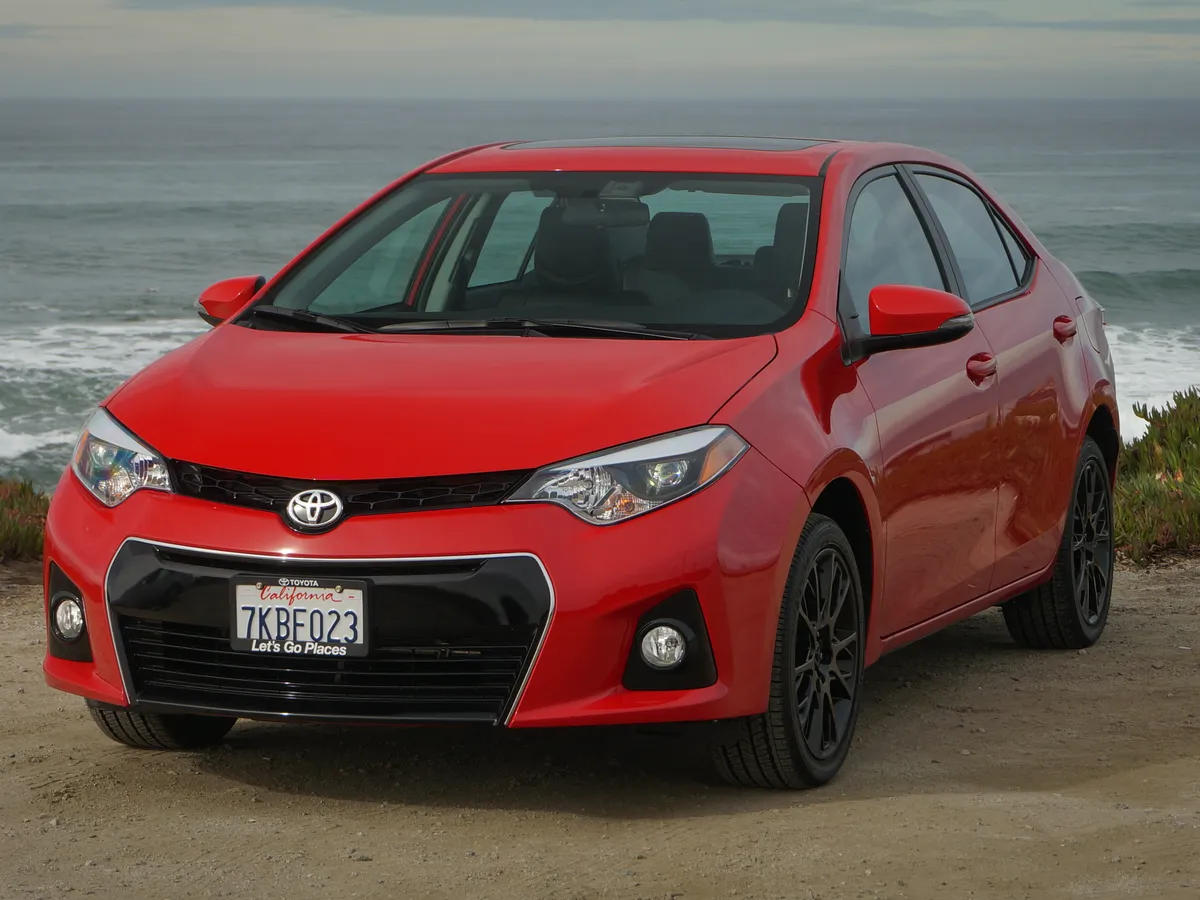
The internet abounds with detailed guides specific to Corolla maintenance tasks, from basic oil changes to more involved timing chain replacements. The vehicle’s electrical system maintains a refreshing simplicity compared to European counterparts.
Diagnostic codes are straightforward and can be accessed using affordable OBD-II scanners, empowering owners to troubleshoot their issues.
Toyota’s reputation for reliability isn’t accidental the company deliberately engineers failure-prone components to be easily serviceable. For instance, the starter motor and alternator are positioned for quick replacement should they fail after years of service.
Perhaps most significantly, the Corolla requires minimal specialized tools for common maintenance tasks. A basic socket set, screwdrivers, and wrenches will handle most routine procedures.
Parts availability represents another advantage, with affordable components widely available through multiple channels, from genuine Toyota parts to quality aftermarket alternatives at various price points.
This accessibility makes the Corolla an excellent choice for novice mechanics building confidence or experienced DIYers who value straightforward maintenance.
2. Honda Civic
The Honda Civic has cultivated a devoted following among DIY mechanics for good reason. Its engine bay exemplifies Honda’s engineering philosophy of elegant simplicity; components are arranged logically with clear access paths for maintenance.
Even in modern iterations with more compact packaging, Honda engineers have maintained relatively straightforward paths to key service points. What truly distinguishes the Civic is Honda’s legendary engineering consistency.
Major components follow similar design principles across generations, creating a valuable continuity of knowledge. Once you’ve mastered maintenance on one Civic, those skills transfer readily to other models.
This consistency has fostered one of the most comprehensive DIY communities in automotive culture, with extraordinary documentation available for virtually every procedure.
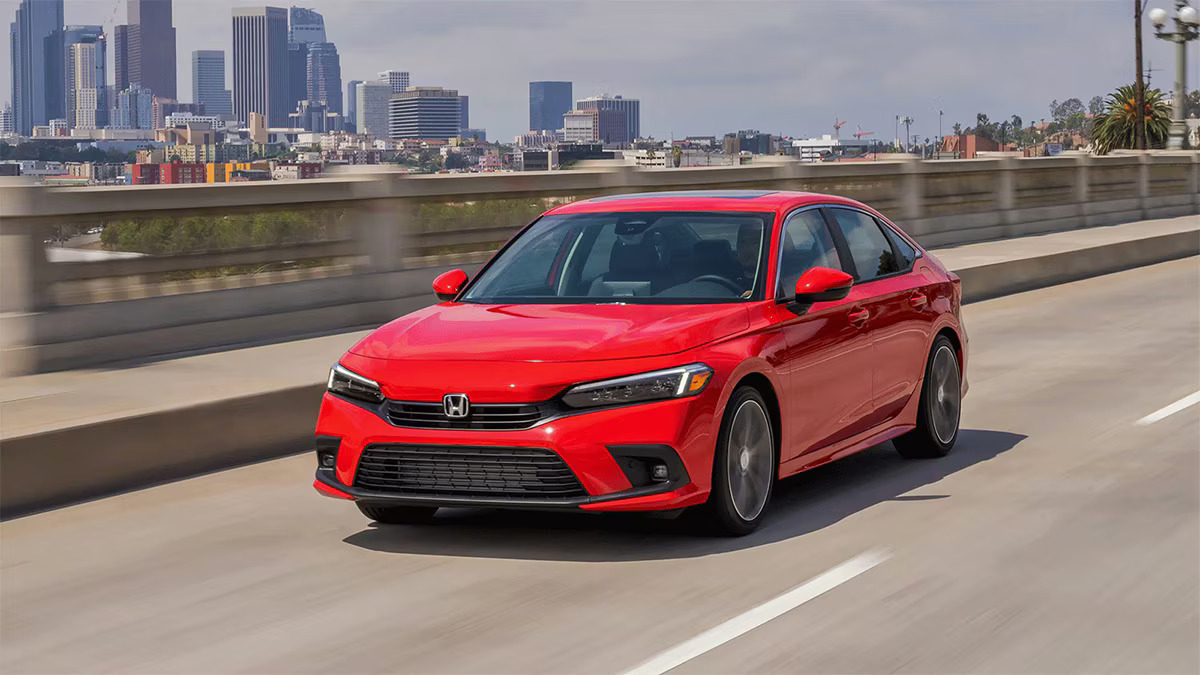
The Civic’s reliability doesn’t come from overbuilt, maintenance-free components but rather from systems designed to be easily serviceable when they eventually require attention.
Taking the timing belt service while requiring moderate mechanical skill, Honda has designed the procedure to be remarkably straightforward compared to competitors, with clear access points and logical component placement.
The electrical systems strike an ideal balance between modern functionality and accessibility. Even in newer models with advanced driver assistance features, the core mechanical systems maintain their approachable design.
Diagnostic interfaces use standard protocols that work with affordable consumer-grade scanners, allowing owners to interpret their vehicle’s status without dealer visits.
Honda’s engineering approach respects the owner’s right to repair components that are designed to be removed and replaced individually rather than as expensive integrated units. This philosophy extends to the parts ecosystem, where quality aftermarket components compete with OEM parts at various price points.
The Civic also boasts exceptional documentation, with detailed factory service manuals available to the public that provide professional-level guidance for the ambitious home mechanic, making complex procedures like clutch replacements or suspension overhauls entirely feasible for dedicated DIYers.
3. Jeep Wrangler
The Jeep Wrangler represents a different philosophy of DIY-friendliness, one born from the vehicle’s utilitarian heritage and supported by its status as an enthusiast platform.
Unlike compact cars designed primarily for efficiency, the Wrangler’s body-on-frame construction creates abundant access space for maintenance tasks.
This design approach means major components aren’t compressed into tight spaces, allowing straightforward access to everything from starter motors to differentials.
The Wrangler’s upright engine layout deserves particular mention, oil filters, spark plugs, and belts are mounted with visibility and access as evident priorities.
Even tasks like radiator replacement, which might require significant disassembly in other vehicles, can be accomplished relatively easily in the Wrangler.
The raised stance and substantial ground clearance eliminate the need for ramps or lifts for many underbody maintenance procedures a simple jackstand setup suffices for most owners.
Jeep’s enthusiast community represents perhaps the most comprehensive DIY support network in automotive culture. The vehicle’s popularity among off-roaders has created an ecosystem where modifications and repairs are thoroughly documented across forums, YouTube channels, and dedicated websites.
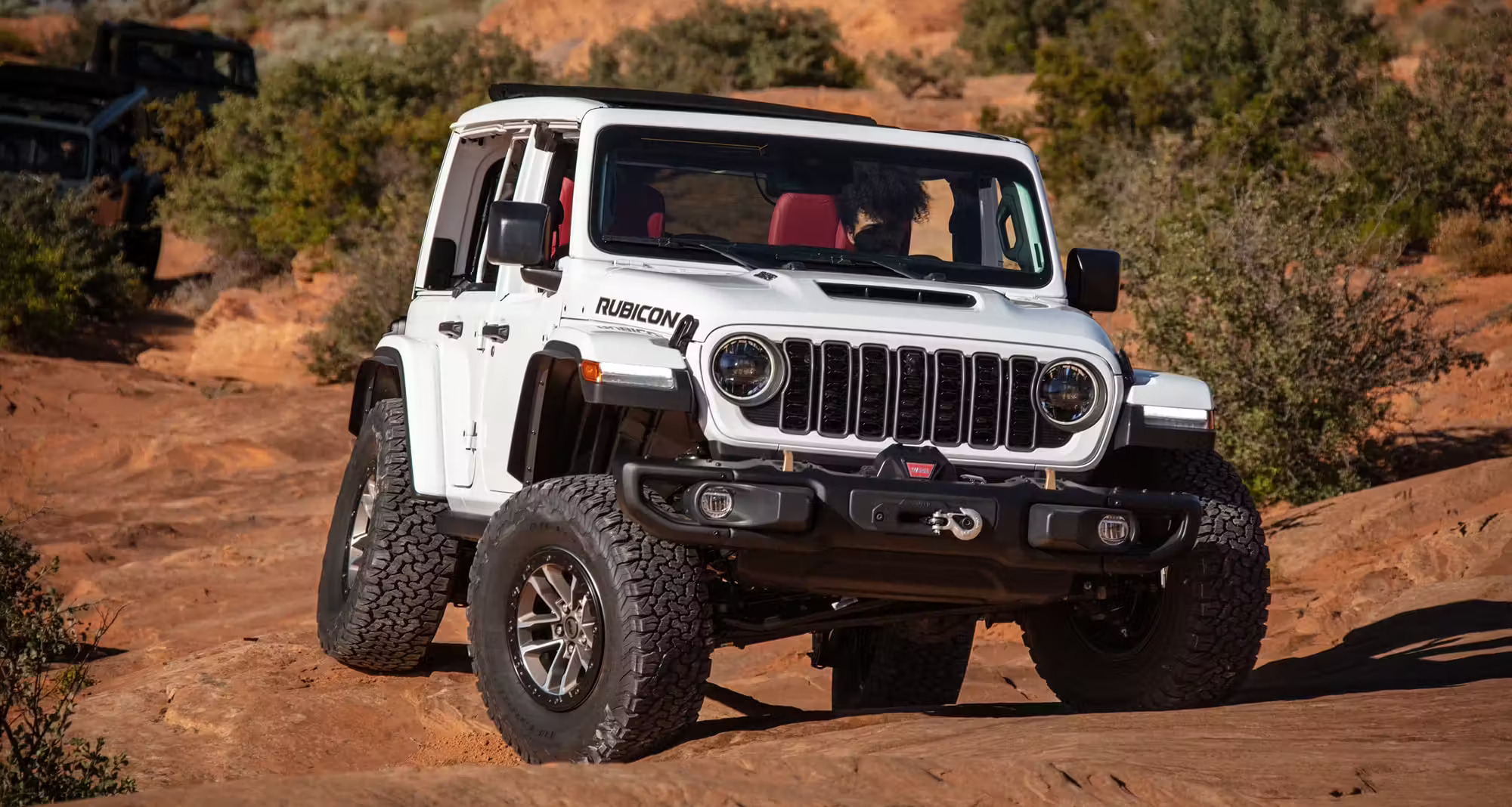
This community knowledge extends beyond basic maintenance to comprehensive rebuilds and upgrades. The modular design philosophy extends throughout the vehicle body panels, doors, and tops are designed to be removed with basic tools.
This modularity carries through to the drivetrain components, where items like differentials can be serviced without complete vehicle disassembly. Even the electrical system maintains a relatively straightforward design, with accessible fuse boxes and connectors designed for field serviceability.
Parts availability represents another Wrangler strength; the aftermarket support is unparalleled, with multiple suppliers offering everything from OEM-equivalent components to performance upgrades.
While the Wrangler’s reliability has historically had some questionable periods, the ease of addressing those issues has kept ownership costs manageable for hands-on owners.
The Wrangler’s design ethos makes it uniquely suitable for owners who view their vehicle not just as transportation but as a platform for learning mechanical skills, rewarding incremental knowledge with the ability to tackle increasingly complex maintenance and modification tasks.
4. Ford F-150
The Ford F-150’s status as America’s bestselling vehicle for decades has created an unparalleled ecosystem for DIY maintenance. As a work vehicle designed for longevity, Ford engineers the F-150 with serviceability as a primary consideration.
The truck’s generous proportions translate directly to maintenance advantages. The engine bay provides ample space to work, with accessibility to belts, hoses, and filters that compact cars simply cannot match.
Ford’s commitment to the DIY owner manifests in thoughtful design touches throughout the vehicle. Oil drain plugs and filters are positioned for minimal mess during changes. Fuel filters, often hidden in compact cars, are placed in logical, accessible locations.
The electrical system features clearly labeled fuse boxes with comprehensive coverage in the owner’s manual. Even seemingly minor details like the battery placement forward in the engine bay with easily accessible terminals demonstrate consideration for the home mechanic.
The F-150’s mainstream popularity has generated extraordinary documentation resources. Factory service information is widely available, and the sheer volume of these trucks ensures that virtually every repair scenario has been documented online.
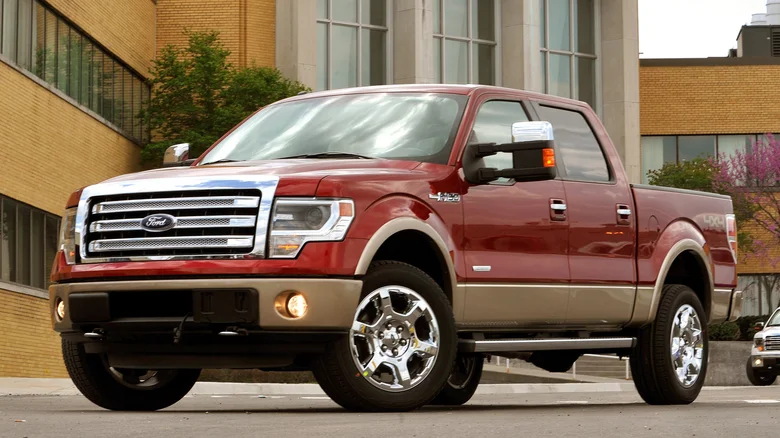
This extends beyond basic maintenance, engine rebuilds, transmission replacements, and differential overhauls, all have step-by-step guides available from multiple sources. The standardization across years means procedures often remain relevant across generations.
Parts availability represents another significant advantage. The truck’s ubiquity ensures that components are stocked everywhere, from local auto parts stores to specialized online retailers.
The competitive aftermarket creates price options ranging from budget-friendly to premium, allowing DIYers to select components matching their quality expectations and budget constraints.
Ford’s modularity approach means that many systems can be serviced independently without cascading disassembly requirements. The truck’s body-on-frame construction provides access paths to major components that unibody vehicles can’t match.
For owners willing to invest in their mechanical knowledge, the F-150 offers an ideal platform where skills can grow alongside ambition starting with oil changes and gradually progressing to more complex procedures like brake replacements, suspension work, and even engine or transmission swaps when necessary.
This accessibility has created generations of self-sufficient owners who maintain their trucks far beyond average vehicle lifespans.
Also Read: 5 Sports Cars That Are Reliable and 5 That Spend Time in Shops
5. Subaru Outback
The Subaru Outback occupies a unique niche in DIY-friendly vehicles, combining passenger car accessibility with the ground clearance traditionally associated with trucks and SUVs.
This raised stance provides significant underbody access for home mechanics without specialized lift equipment. Oil changes, transmission service, and exhaust work can often be performed with basic jack stands, eliminating a major barrier to entry for DIY maintenance.
Subaru’s commitment to the horizontally-opposed “boxer” engine creates both challenges and opportunities for home mechanics. While the low, wide engine configuration requires some adjustment for those accustomed to inline or V-type engines, it offers excellent access to certain components.
The horizontally opposed cylinder layout places spark plugs on the sides of the engine rather than buried beneath intake manifolds or against firewalls. Once familiar with the layout, many owners find routine maintenance surprisingly straightforward.
The Outback benefits from Subaru’s philosophy of evolutionary rather than revolutionary design changes. This consistency means that procedures and knowledge transfer well between model years, creating a cumulative knowledge base among enthusiasts.
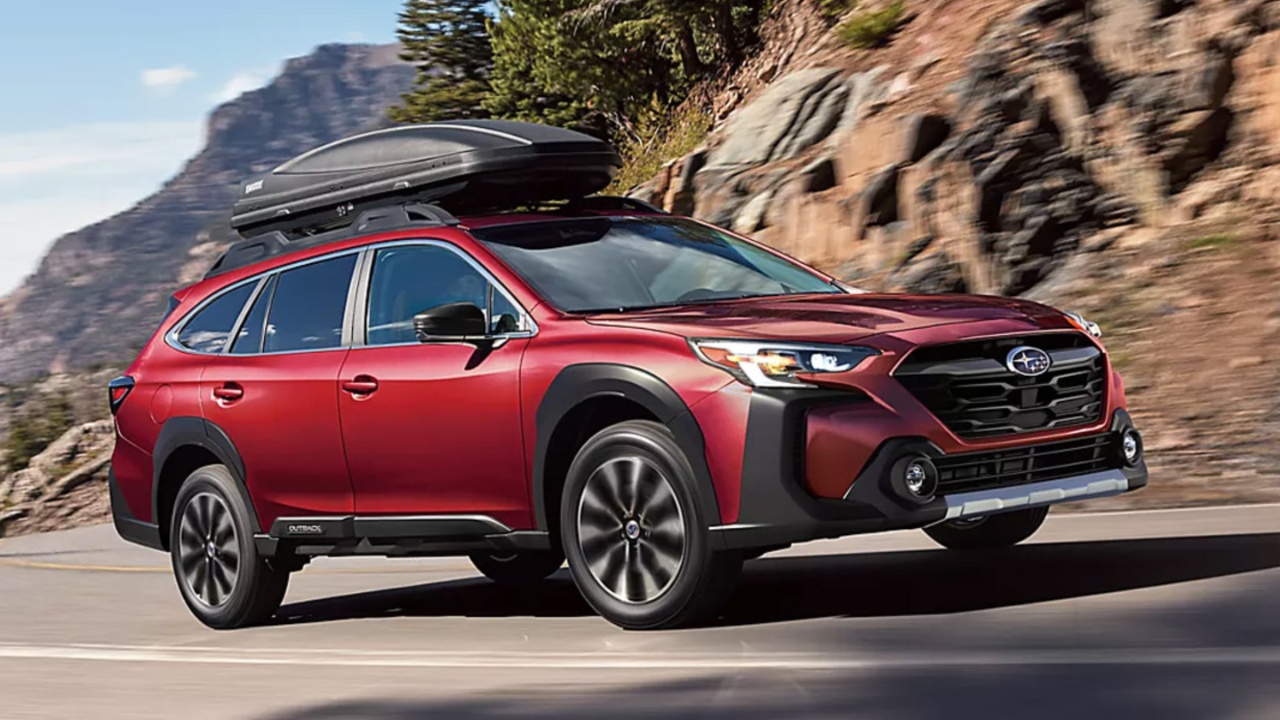
Subaru’s popularity in regions with harsh winters has fostered a community of self-reliant owners who share detailed maintenance procedures across forums and video platforms.
Component accessibility remains remarkably consistent throughout the vehicle. Filters, fluids, and wear items are positioned with service in mind. The electrical system maintains logical organization with well-documented diagnostic procedures accessible to owners with basic scanning tools.
Subaru’s approach to engineering favors mechanical robustness over complex systems like the all-wheel drive, using ingenious but fundamentally straightforward mechanical designs that remain serviceable without specialized equipment.
Parts availability represents another strength for Outback owners. While Subaru-specific components like boxer engine parts have fewer aftermarket options than mainstream vehicles, the brand’s growing popularity has expanded both OEM and aftermarket availability.
Many wear items like brakes, suspension components, and filters use industry-standard sizes with broad aftermarket support. The enthusiast community has also driven the development of specialized tools that simplify boxer-engine-specific tasks.
For home mechanics willing to learn the quirks of the horizontally opposed engine layout, the Outback offers a vehicle that can be maintained throughout its long service life without exclusive reliance on dealership service departments.
Cars That Need Specialists
1. BMW 7 Series
The BMW 7 Series epitomizes the modern luxury sedan, where cutting-edge technology takes precedence over maintenance accessibility.
Beneath its elegant exterior lies an extraordinarily complex network of interconnected systems designed to deliver uncompromising performance and comfort at the expense of DIY friendliness.
The engine bay exemplifies the challenge, with components stacked in dense arrangements that maximize space efficiency but minimize access. Even basic maintenance tasks like oil changes involve specialized procedures, with electronic service resets required through proprietary diagnostic systems.
BMW’s engineering philosophy prioritizes integrated systems where cooling, electrical, and propulsion components operate as interdependent networks rather than isolated systems.
This integration delivers exceptional performance but creates cascading disassembly requirements for even moderate repairs. A simple water pump replacement might require the removal of multiple unrelated components to create access paths.
The electrical architecture represents perhaps the greatest barrier to DIY maintenance dozens of networked control modules communicate via sophisticated protocols that require dealer-level diagnostic equipment to properly interpret and service.
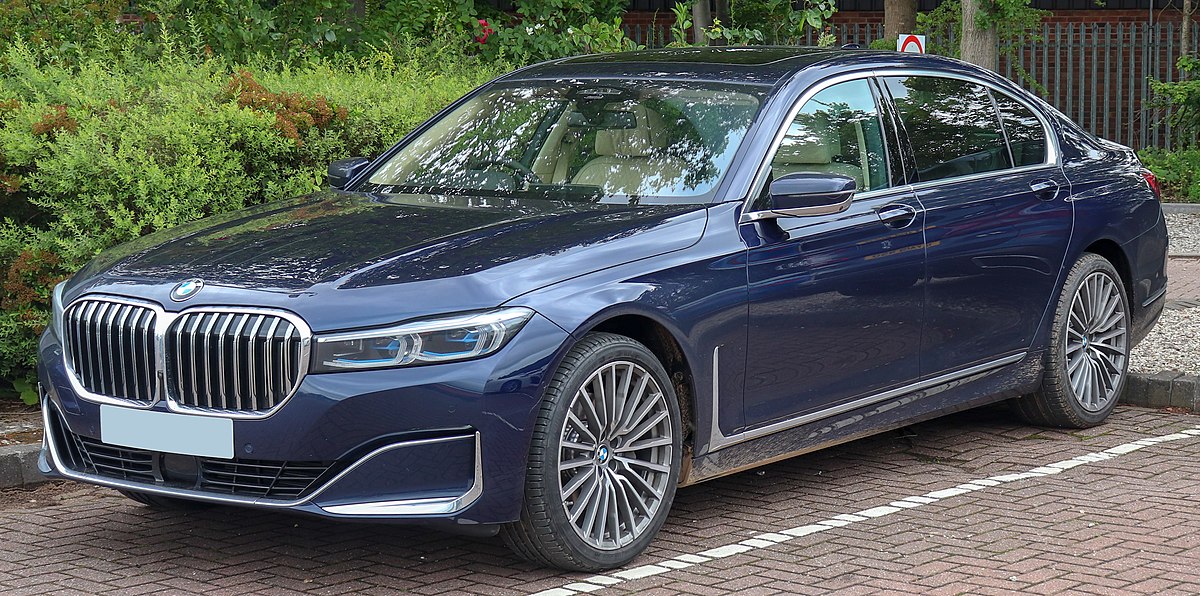
The 7 Series cooling system illustrates these challenges perfectly. Rather than using conventional thermostats and simple electric pumps, BMW employs electronically controlled thermostats, multiple circulation pumps, and complex routing that maintains different temperature zones throughout the engine.
When issues arise, proper diagnosis requires not just mechanical knowledge but advanced electronic diagnostic capabilities to interpret the sophisticated sensor network.
Parts availability presents another significant obstacle; many components are available exclusively through dealership channels, with limited aftermarket alternatives.
When aftermarket parts do exist, they often lack the programming capabilities required to properly integrate with the vehicle’s complex systems.
Even battery replacement becomes complex, requiring registration with the vehicle’s power management system to prevent cascading electrical issues.
The transmission exemplifies the specialist requirement, featuring adaptive shifting programs that continuously modify behavior based on driving patterns. These systems require periodic adaptation resets using specialized diagnostic tools beyond the reach of average owners.
While the 7 Series delivers an exceptional driving experience through its sophisticated technology, this comes with an unavoidable dependency on specialist knowledge, tools, and diagnostic capabilities beyond what most DIY mechanics can reasonably acquire.
For owners, this translates to a vehicle that delivers uncompromising luxury and performance, but at the cost of self-serviceability.
2. Mercedes-Benz S-Class
The Mercedes-Benz S-Class stands as the brand’s technological flagship, showcasing innovations that eventually filter down through the automotive industry.
This role as technology leader creates fundamental barriers to DIY maintenance, beginning with the vehicle’s complex packaging.
Engine compartments are designed for aesthetic elegance and noise suppression rather than service access, with beauty covers concealing a densely packed arrangement of components that often require specialized removal procedures documented only in factory service literature.
Mercedes’ commitment to engineering excellence manifests in sophisticated systems that demand equally sophisticated maintenance approaches.
The air suspension system exemplifies this philosophy while delivering exceptional ride quality. It comprises numerous interconnected components, including compressors, electronic leveling sensors, and control modules that require synchronization when serviced.
DIY attempts at repairs often create cascading issues as these precisely calibrated systems fall out of alignment without factory reset procedures. The electrical architecture represents perhaps the greatest obstacle to home maintenance.
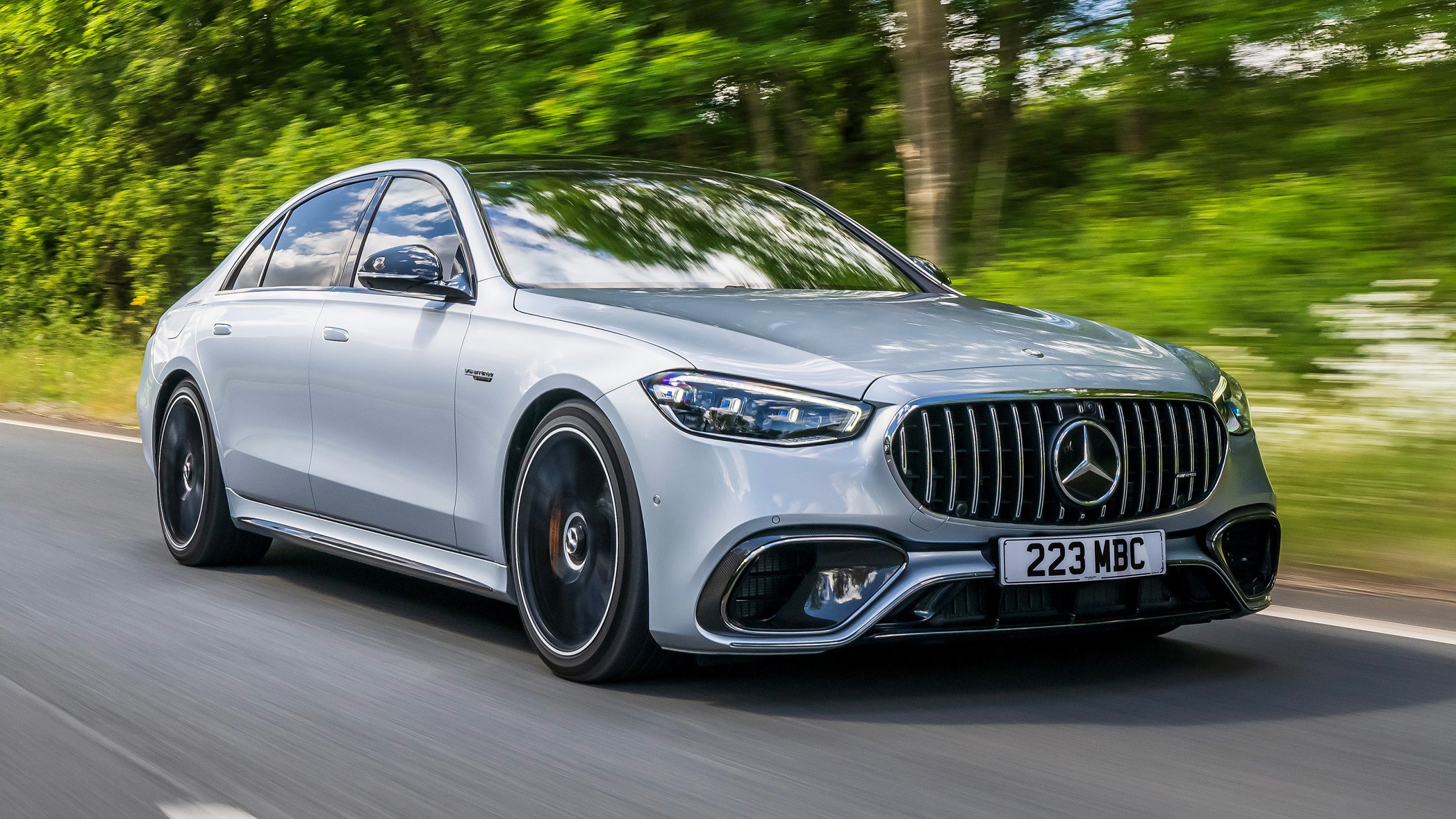
Modern S-Class models feature over 100 electronic control units communicating across multiple networks. These systems require Mercedes’ proprietary Star Diagnosis equipment to properly interpret fault codes and perform system resets.
Even seemingly mechanical tasks like brake pad replacement involve electronic components; the electronic parking brake requires specific activation sequences to retract calipers for service.
Mercedes’ focus on integrated systems means that components rarely fail in isolation. When issues arise, proper diagnosis requires understanding the relationships between multiple interconnected systems, a task that demands both advanced diagnostic equipment and extensive training in Mercedes-specific systems.
The manufacturer’s service procedures often call for specialized tools designed explicitly for narrow use cases within these vehicles, making it economically impractical for DIY mechanics to acquire the necessary equipment.
Parts present another significant barrier, while mechanical components might be physically interchangeable, modern Mercedes components often require electronic coding or adaptation to function properly within the vehicle’s sophisticated networks.
Even fluids follow proprietary specifications with limited aftermarket alternatives.
This specialist-oriented design philosophy delivers undeniable benefits in performance, comfort, and innovation, but creates an ownership experience fundamentally dependent on authorized service centers with the training, documentation, and equipment necessary to maintain these complex systems properly.
3. Range Rover
The Range Rover combines luxurious appointments with genuine off-road capability through extraordinarily complex mechanical and electronic systems that create significant barriers to DIY maintenance.
The vehicle’s design prioritizes performance and packaging efficiency over service accessibility, resulting in an engine bay where components are stacked in tight arrangements that maximize space utilization but minimize maintenance access.
Routine tasks like spark plug replacement often require partial disassembly of unrelated components simply to create access paths. Land Rover’s sophisticated four-wheel-drive systems represent a particular challenge for home mechanics.
The computer-controlled transfer case, electronically locking differentials, and terrain response system operate as an integrated unit that requires specialized diagnostic equipment to properly service.
When issues arise, identifying the specific fault requires understanding the complex interplay between mechanical components and the electronic control systems that manage them capability beyond most DIY toolsets.

The air suspension system exemplifies the specialist requirement. While delivering exceptional versatility from increased ground clearance for off-roading to lowered entry height at rest the system comprises numerous interconnected components.
These include compressors, height sensors, valve blocks, and control modules that must operate in precise coordination. DIY repairs frequently create cascading issues as components fall out of calibration without proper reset procedures.
Range Rover’s electrical architecture presents perhaps the most significant obstacle to home maintenance. The vehicle utilizes multiple interconnected control modules communicating via sophisticated network protocols.
Proper diagnosis requires Land Rover-specific diagnostic equipment capable of accessing these networks and interpreting the complex data streams they generate.
Even battery replacement becomes a technical procedure requiring registration with the vehicle’s power management system.
Parts availability compounds these challenges many components are available exclusively through dealership channels with limited aftermarket alternatives. When aftermarket parts do exist, they often lack the programming capabilities required to properly integrate with the vehicle’s systems.
The Range Rover’s history of electronic and mechanical complexity has created a maintenance environment where proper service requires specialized knowledge, documentation, and equipment typically available only to trained Land Rover technicians.
While delivering exceptional luxury and capability, Range Rovers create an ownership experience fundamentally dependent on specialist support.
4. Audi A8
The Audi A8 represents the pinnacle of the brand’s engineering philosophy, where cutting-edge technology and performance take precedence over maintenance accessibility.
From its aluminum-intensive construction to its sophisticated electronic architecture, the A8 creates fundamental barriers to DIY maintenance that extend beyond mere inconvenience to practical impossibility for many procedures.
The engine compartment exemplifies this approach; components are arranged in layered configurations that maximize space efficiency but minimize access for service.
Audi’s commitment to lightweight construction results in extensive use of aluminum throughout the vehicle structure. While delivering performance benefits, this creates special requirements for repair procedures.
Unlike steel components, aluminum parts require specific repair techniques to maintain structural integrity, including specialized welding equipment and procedures documented only in factory service literature. Even minor body repairs become specialist territory due to these material considerations.
The vehicle’s electrical system represents perhaps the greatest obstacle to DIY maintenance. Modern A8 models feature a distributed electronic architecture with dozens of control modules communicating across multiple network protocols.
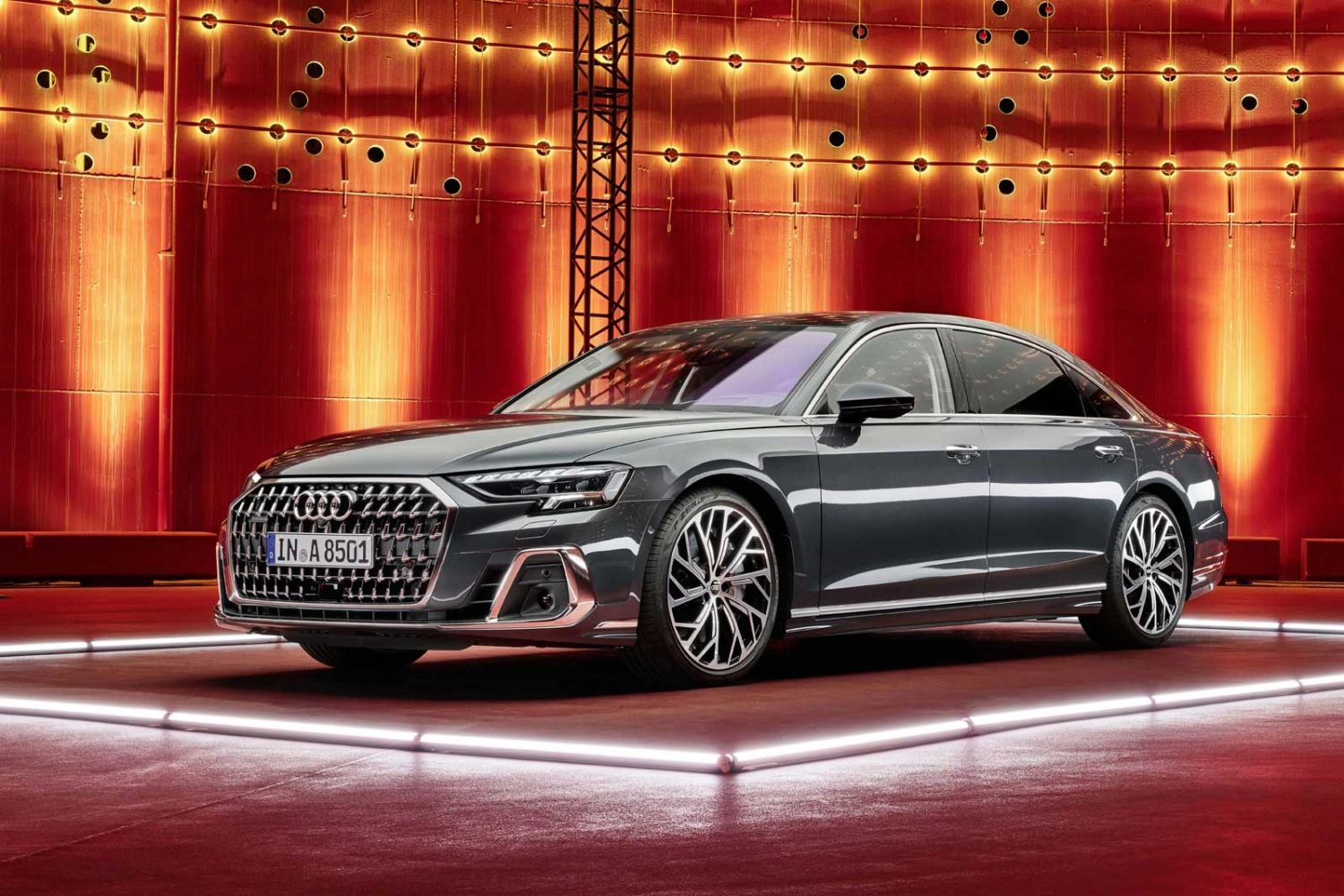
These systems require Audi-specific diagnostic equipment to properly interpret fault codes and perform necessary adaptation procedures after component replacement.
Even seemingly straightforward tasks like brake pad replacement involve electronic components; the electronic parking brake requires activation through diagnostic equipment to retract for service.
Audi’s design philosophy embraces integrated systems where cooling, electrical, and propulsion components function as interdependent networks rather than isolated systems.
This integration delivers exceptional performance and efficiency, but creates troubleshooting scenarios where problems frequently cross traditional system boundaries.
Proper diagnosis requires understanding these relationships, knowledge typically available only to technicians with Audi-specific training and access to factory service information.
The A8’s air suspension, advanced driver assistance systems, and all-wheel-drive system further exemplify the specialist requirement.
These systems demand precise calibration procedures after service, requiring both specialized equipment and procedures documented only in factory literature.
Parts availability compounds these challenges many components are available exclusively through dealership channels, with programming requirements that prevent successful DIY installation.
While delivering an exceptional driving experience through its sophisticated technology, the A8 creates an ownership experience fundamentally dependent on specialist support for proper maintenance.
5. Tesla Model S
The Tesla Model S represents a fundamental departure from conventional automotive design, creating unique challenges for DIY maintenance that extend beyond traditional barriers.
Unlike internal combustion vehicles with century-old maintenance traditions, Tesla’s design philosophy prioritizes software-integrated systems and sealed components over mechanical accessibility.
This approach delivers performance and efficiency advantages but creates a maintenance paradigm fundamentally dependent on Tesla’s proprietary systems and authorized service centers.
The most obvious DIY limitation stems from the high-voltage electrical system. With battery packs operating at over 400 volts, safety concerns legitimately restrict access to many components.
While conventional vehicles separate high-risk systems (fuel delivery) from routine maintenance areas, Tesla’s integrated design means high-voltage components intersect with numerous service points.

Without specialized training in high-voltage safety protocols and Tesla-specific disabling procedures, many components remain hazardous even when the vehicle appears “off.”
Tesla’s software-centered approach creates another significant barrier. Vehicle functions routinely controlled by mechanical systems in conventional vehicles operate through software in Teslas.
Access to this software environment requires Tesla-specific diagnostic equipment unavailable to independent repair facilities, let alone DIY owners. Even basic functions like brake caliper retraction for pad replacement involve electronic activation sequences documented only in Tesla service literature.
Parts availability represents perhaps the greatest obstacle to independent maintenance. Tesla maintains tight control over component distribution many parts are available exclusively through authorized service centers.
Without established aftermarket alternatives, DIY repairs often remain theoretical rather than practical possibilities. Even when physical components might be sourced, their integration into the vehicle’s sophisticated networks requires Tesla-specific programming capabilities.
The centralized computing architecture further complicates independent service. Unlike conventional vehicles, where systems operate semi-independently, Tesla’s design uses centralized computers controlling multiple systems through shared hardware.
This integration delivers performance and update capabilities unmatched by conventional vehicles but creates repair scenarios where replacing physical components requires software authorization through Tesla’s proprietary networks.
While delivering exceptional innovation through its technology-forward approach, the Model S creates an ownership experience fundamentally tied to Tesla’s service ecosystem a significant departure from the DIY-friendly vehicles of previous generations.
Also Read: 5 Vehicles That Last on Rural Roads and 5 That Belong in Cities

